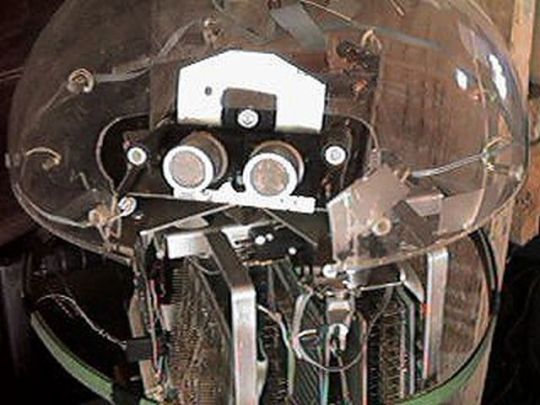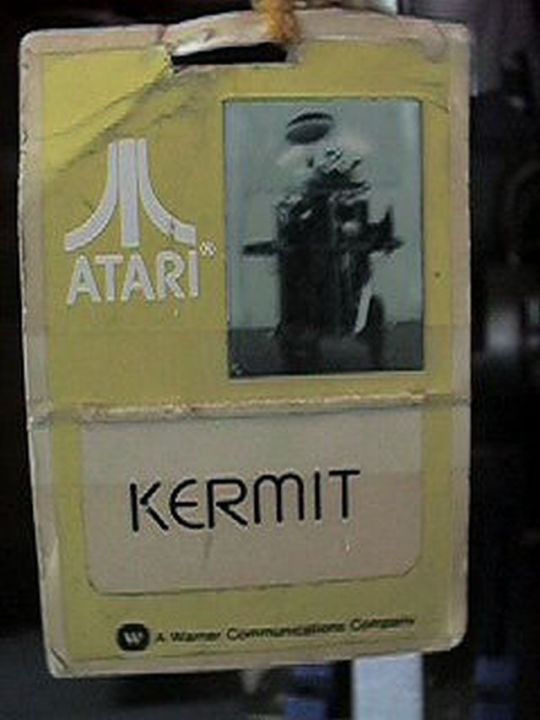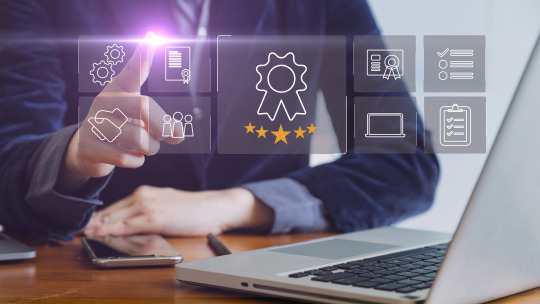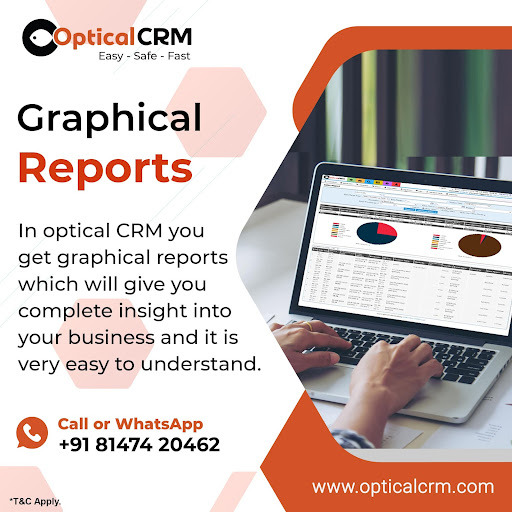#Barcode Software services
Explore tagged Tumblr posts
Text
Upgrade Your Convenience Store: The Essential Guide to Stocktaking Apps
Upgrade Your Convenience Store: The Essential Guide to Stocktaking Apps
Convenience stores are a cornerstone of modern life, offering a quick and easy solution for everyday needs. But with a vast array of products and fast-paced environments, maintaining accurate inventory levels can be a constant battle. Enter the age of stocktaking apps – a revolutionary technology transforming the way convenience stores operate.
The Challenge: Juggling Inventory in a Fast-Paced Environment
Convenience stores walk a tightrope with inventory. Their shelves offer a vast selection of products, each with its own sales patterns. This constant need for monitoring and adjustments makes traditional stocktaking services, reliant on manual counting and spreadsheets, a recipe for disaster. Not only are these methods time-consuming and prone to errors, but they also leave room for miscalculations and missed opportunities, which lead to frustrated customers and wasted resources as overstocked products inch closer to their expiration date.
The Solution: Stocktaking Apps Ushering in a New Era
Stocktaking apps for convenience stores take a revolutionary road by offering real-time inventory visibility, optimised ordering, expiry management, and minimised shrinkage. These benefits not only streamline operations but also empower data-driven decision making, enhance employee productivity, and potentially reduce labour costs. By embracing stocktaking apps, convenience stores gain a competitive edge through improved efficiency, waste reduction, and enhanced customer satisfaction.
Finding the Right Stocktaking App
Advstock is your best choice for innovative inventory management apps designed for your convenience. Simply generate a product list, export it, and download our Barcode Inventory Software compatible with iPhone and Android devices. Next, scan your stock with our purchasable scanning system. Finally, upload your counts and monitor stock levels with our user-friendly inventory tracking app. Our stock and inventory app also comes in several versions to support different inventory needs – stocktaking apps for food and beverage business, stocktaking apps for pharmacies, and stocktaking apps for bars and clubs.
Ready to revolutionise your convenience store? Explore the world of stocktaking apps with Advstock and discover how they can transform your business!
#stocktaking apps#stocktaking services#stocktaking apps for convenience stores#inventory management apps#Barcode Inventory Software#inventory tracking app#stocktaking apps for food and beverage business#stocktaking apps for pharmacies#stocktaking apps for bars and clubs
0 notes
Text

Unlocking the Power of IoT: Explore Our Comprehensive IoT Service Offerings
In today's digitally driven world, the Internet of Things (IoT) has emerged as a transformative force, revolutionizing the way we interact with technology and data. From smart homes to industrial automation, IoT is reshaping industries and enhancing efficiency like never before. At Delmon Solutions, we're at the forefront of this technological revolution, offering a wide range of IoT service offerings tailored to meet the diverse needs of businesses and individuals alike.
Why Choose Our IoT Service Offerings?
When it comes to harnessing the potential of IoT, partnering with the right service provider is crucial. Here's why our IoT service offerings stand out:
Expertise: With years of experience in the IoT industry, we boast a team of seasoned professionals who possess deep expertise in developing and implementing IoT solutions across various domains.
Customization: We understand that every business is unique, with its own set of challenges and requirements. That's why we offer fully customizable IoT solutions designed to address your specific needs and objectives.
Scalability: Whether you're a startup looking to dip your toes into IoT or a large enterprise seeking to expand your existing infrastructure, our IoT service offerings are highly scalable, ensuring seamless growth and adaptation to changing business dynamics.
Reliability: We prioritize reliability and performance in all our IoT solutions, leveraging robust technologies and rigorous testing methodologies to deliver solutions that you can trust.
End-to-End Support: From initial consultation to deployment and ongoing maintenance, we provide comprehensive end-to-end support to ensure a smooth and hassle-free experience for our clients.
Our Comprehensive IoT Service Offerings
Explore the wide array of IoT services we offer:
IoT Consulting Services:
Strategic IoT roadmap development
Business case analysis and ROI assessment
Technology stack selection and architecture design
IoT Development Services:
Custom IoT application development
Embedded software development
Sensor integration and firmware development
IoT Platform Development:
Development of scalable and secure IoT platforms
Cloud infrastructure setup and management
Data analytics and visualization solutions
IoT Integration Services:
Integration with existing IT systems and infrastructure
API development and integration
Legacy system modernization for IoT compatibility
IoT Security Solutions:
End-to-end IoT security assessment and implementation
Data encryption and secure communication protocols
Continuous monitoring and threat detection
IoT Maintenance and Support:
Proactive monitoring and performance optimization
Regular software updates and patches
24/7 technical support and troubleshooting
Unlock the Full Potential of IoT with Delmon Solutions
Whether you're looking to streamline operations, improve efficiency, or drive innovation, our IoT service offerings are designed to help you achieve your goals effectively. Don't miss out on the opportunity to leverage the power of IoT for your business. Get in touch with us today to learn more about how we can help you unlock the full potential of IoT. Let's embark on this transformative journey together!
#IoT Service Offerings#Big Data Analytics#Dashboard Monitoring Solutions#RFID & Barcode Based Software Solutions#Custom Software Solutions
0 notes
Text

Business Intelligence Analytics - Enterlogix Corporation
Enterlogix Corporation offers advanced Business Intelligence Analytics solutions designed to empower businesses with data-driven insights and strategic decision-making capabilities and we help clients unlock the full potential of their data, driving and operational excellence. For more information, visit our website or contact us.
+1 832-278-1229
#salesforce consulting services#Salesforce Consulting Services#Software Auditing Services#Salesforce barcode scanner#Gps barcode scanner#Barcode Reader App#Barcode Scanners Apps#Power Platform Microsoft#Ms Power Apps#Microsoft CRM System#Risk Management Strategy#Risk Analysis Service#Data Rescue Service#Project Rescue Services#Business Intelligence Analytics#Business Intelligence Services#Cloud Strategy Consulting
0 notes
Text
Optical CRM offers best Retail Software for Optical Retail Store. Retail Management software manages financial reporting, accounting, and operations of retail stores by integrating core business processes such as Point of Sale (POS). For more details Visit Our Website.
0 notes
Text





Kermit (1978), by Ron Milner and Larry Nicolson, Cyan Engineering, Atari's secret think tank in Grass Valley, CA.
"The robot was a pet project for Nolan Bushnell, then still the head of Atari and a very creative guy. Its purpose in life was as Nolan put it to "bring me a beer!" Navigation for robots was a sketchy thing at that time with lots of pioneering work at MIT but no consumer cost ideas. Nolan brought us the incredibly original idea to navigate a robot (which mostly meant knowing where it was) by means of scanning bar codes attached here and there to the baseboards in the rooms the robot was to service. Why it wasn't patented I don't know.
I had lots of fun building the R2D2 style robot about 20" tall. I liked to put mechanical and electronic things together and we had a great shop at Cyan. Its brain was one of the 6502 based single board computers-I think it was a KIM but not sure. Locomotion was two DC gear motor driven wheels and an instrumented caster-about the same rig as a modern Roomba. A rotatable turret covered with a plexiglass dome carried microphones, an IR sensor to detect people, and ultrasonic ranging sensors I built on a separate PC board. A speaker so Kermit could beep gleefully, of course.
A ring of contact-detecting burglar alarm sensing tape (green in the pictures) around Kermit's middle told the software he had hit something and should back off. The ultrasonics provided range to obstacles and to some extent direction as the turret was rotated, so we could go around things.
My pride and joy was the barcode remote scanner which was mounted on the bottom of the robot so its rotating head would be level with the barcodes on the baseboards. It had a vertical telescope tube with a beam splitter between the IR Led and the photodiode sensor and a lens to focus 2-20' away. It aimed down at a front surface mirror at 45 degree to scan horizontally. The mirror was mounted on a motor driven turret so it spun around continuously with a sensor once around to resolve the continuous angular position of the beam horizontally of course with respect to Kermit's rotational position. Unfortunately, this part of the robot did not survive the closing of our group. The barcodes I made for the prototype to detect were about 4" tall made of 3/4" reflective 3m tape on black poster board.
My programming partner on the project was Larry Nicholson, a really bright guy. He made the barcode reading work to detect not only the barcodes, but where they were angularly with respect to the robot and also their subtended angle or apparent size (all from timing of the rotation of the scanner) which was a measure of distance combined with angle from the barcode. We worked out some pretty clever math to resolve that information from two or three of the barcodes into a position and orientation of Kermit in the room. We had rented an empty room upstairs on the third floor of the Litton building to try all this out and work out the navigation. Larry and I got the basic navigation and obstacle avoidance working so Kermit could go from one place to a designated other place in the room and avoid wastebaskets placed randomly. We demonstrated it to Nolan and he was impressed.
Shortly thereafter Warner Communication who had bought Atari from Nolan kicked him out and the Kermit project was cancelled."
– Kermit The Robot Notes by Ron Milner.
64 notes
·
View notes
Text
Sticker Cutter Research
I was looking into getting a sticker cutting machine, and I decided to start by looking into cricut which is a well known brand. I had a look at what models they had than their feature etc, but what I was most concerned about was their software. Printer companies like to lock you into a defacto subscription to support hardware you don't really own, and as I was to discover, cricut are operating in a similar way.
The cricut software is online-only*. To cut your own designs you need to use their software to upload your art to their server. There's no way to cut a new design without a logged-in cricut account and an internet connection. At one point in 2021 they flirted with limiting free accounts to 20 uploads/month but backed down after huge community backlash, as far as I can tell.
The incident spawned several community efforts to write open-source firmware for cricut hardware. Some efforts were successful for specific models/serial numbers, but require cracking open the case and hooking in to the debug contacts to flash the chip; not exactly widely accessible. Another project sought to create a python cricut server you can run locally, and then divert the app's calls to the server to your local one.
I restarted my search, this time beginning with looking for extant open-source software for driving cutters, and found this project, which looks a little awkward to use, but functional. They list a bunch of cutter hardwares and whether they're compatible or not. Of those, I recognised the sihouette brand name from other artists talking about them.
I downloaded the silhouette software to try like I did w the cricut software, and immediately it was notable that it didn't try to connect to the internet at all. It's a bit clunky, in that way printer and scanner software tends to be, but I honestly greatly preferred using it to cricut's sluggish electron app⁺. Their software has a few paid tiers above the free one, adding stuff like sgv import/export/and reading cut settings from a barcode on the input material. They're one-off payments, and seem reasonable to me.
This is not so much a review, as sharing some of the research I've done. I haven't yet used either a cricut or a silhouette, and I haven't researched other brands either. But I wanted to talk about this research because to me, cricut's aggressively online nature is a red flag. Software that must connect to a server to run is software that runs only at the whim of the server owner (and only as long as it's profitable to keep the server up). And if that software is the only thing that will make your several hundred dollars worth of plastic and (cheap, according to a teardown I read) servos run, then you have no guarantee you'll be able to run it in the future.
Do you use a desktop cnc cutter? What has your experience been like with the hardware and software? Do you have any experience from home printers with good print quality and user-refillable ink cartridges?
* Cricut's app tried to connect to more than 14 different addresses, including facebook, youtube, google analytics, datadoghq.com, and launchdarkly.com. Launch Darkly are a service provider that help software companies do a whole bunch of things I'm coming to despise, for example, they offer infrastructure for serving different features to different demographics and comparing results to control groups. You know how at various times you've gotten wildly different numbers of ads than your friends on instagram? They were using techniques like this to work out how many ads they could show without affecting their pickup/engagement rates. Scummy stuff.
⁺ Electron apps are web-pages pretending to be applications. They use heaps of ram, tend to have very poor performance, and encourage frustrating UI design that doesn't follow OS conventions. Discord's app is a notable example of an Electron app
64 notes
·
View notes
Text
Physical Verification of Fixed Assets by MASLLP: Ensuring Accuracy and Accountability
For businesses, maintaining an accurate record of fixed assets is crucial for financial reporting, compliance, and operational efficiency. MASLLP, a trusted name in the financial consulting domain, offers expert services for the physical verification of fixed assets, ensuring your business stays organized, compliant, and secure.
What is Physical Verification of Fixed Assets? Physical verification of fixed assets involves systematically checking and validating the existence, condition, and location of assets owned by a business. It is a critical process to:
Identify discrepancies between physical assets and records. Ensure compliance with accounting standards and regulations. Protect against theft, loss, or mismanagement of assets. Why Choose MASLLP for Fixed Asset Verification? MASLLP’s team of experienced professionals ensures a seamless and accurate verification process. Here’s why businesses trust MASLLP:
Comprehensive Asset Audits MASLLP’s experts conduct thorough physical inspections, cross-referencing assets with financial records to identify inconsistencies.
Advanced Tools and Technology Using cutting-edge tools like barcoding, RFID, and asset tracking software, MASLLP ensures precision in the verification process.
Customized Solutions Every business is unique, and MASLLP tailors its asset verification services to align with your organization’s specific needs and objectives.
Compliance Expertise With MASLLP’s expertise in financial regulations, your business stays compliant with statutory requirements and accounting standards.
Key Benefits of Physical Verification by MASLLP Accurate Financial Reporting Eliminate discrepancies in your financial statements by ensuring all assets are accounted for.
Enhanced Asset Management Identify underutilized, misplaced, or obsolete assets to improve efficiency and cost-effectiveness.
Risk Mitigation Reduce the risk of theft, fraud, or mismanagement by maintaining an accurate and up-to-date asset register.
Regulatory Compliance Ensure adherence to legal and accounting standards, avoiding penalties and audits.
MASLLP’s Fixed Asset Verification Process
Planning and Preparation Understanding the client’s asset management system. Defining the scope of the verification process.
On-Site Physical Verification Conducting a detailed inspection of assets. Tagging and labeling assets where required.
Reconciliation Comparing physical records with the asset register. Identifying and addressing any discrepancies.
Reporting Providing a comprehensive report with findings and recommendations. Why Regular Fixed Asset Verification is Essential Businesses often overlook the importance of regular physical verification, which can lead to:
Inaccurate asset valuation. Missed opportunities for tax benefits. Increased risks of fraud or theft. By partnering with MASLLP, businesses can maintain a robust asset management system and safeguard their investments.
Get in Touch Ensure your fixed assets are accounted for and secure with MASLLP’s Physical Verification of Fixed Assets services.
#accounting & bookkeeping services in india#audit#businessregistration#chartered accountant#foreign companies registration in india#income tax#taxation#ap management services#auditor
5 notes
·
View notes
Text
5 ways to make your fulfillment center run more efficiently
Running a fulfillment center can be extremely challenging in today’s complex and challenging business environment. As an online seller, it's important to ensure that your fulfillment center runs efficiently to meet the demands of your customers. In this blog, we will explore the best five ways to make your fulfillment center run more efficiently.
Optimize your inventory management system
Managing your inventory is one of the most important aspects of running a fulfillment center efficiently. An effective inventory management system can help you track your stock levels and ensure that you have enough products on hand to meet customer demand. Use inventory management software that integrates with your order management system to help you track inventory in real time and avoid stockouts. Utilize demand forecasting to make sure you have enough inventory to fulfill orders during peak demand periods.
Implement efficient picking and packing processes
Picking and packing are the two most critical processes in the order fulfillment cycle. Optimize your picking and packing processes by grouping orders by proximity, picking in batches, and using barcode scanning to avoid errors. Use automation and packing materials that are appropriate for the product being shipped to ensure that items arrive in good condition. You can also implement a quality control process to ensure accuracy and minimize errors.
Invest in automation
Automation can help you improve efficiency and reduce labor costs. Consider investing in automation tools such as conveyor belts, sortation systems, and robots to streamline your fulfillment process. Automation can also help you increase throughput and accuracy, reduce manual labor, and minimize errors. On the other hand, instead of installing all these tools, you can simply partner with NimbusPost, a tech-enabled shipping aggregator that already has 540 fully-equipped facilities and several types of warehouses to provide easy order fulfillment.
Streamline your shipping process
Shipping is a crucial aspect of fulfillment. To make your shipping process more efficient, use shipping software that integrates with your order management system. This can help you automate shipping label generation and reduce manual data entry. Choose a reliable courier service in India or a global shipping partner to ensure timely delivery and track your shipments in real time.
Train and empower your staff
Your employees are the backbone of your fulfillment center. To improve efficiency, provide regular training to ensure that they understand their roles and responsibilities. Empower your staff by giving them the tools and resources they need to succeed, such as mobile devices for picking and packing or access to real-time inventory information. Encourage open communication and solicit feedback to identify opportunities for improvement.
Conclusion
There are several ways to make your fulfillment center run more efficiently. You can follow the mentioned ways to improve your fulfillment center’s efficiency or just hire a solid shipping aggregator to get everything handled without stress at the best rates
2 notes
·
View notes
Text
Revolutionize Your Laundry Business with the Best Laundry Software
Laundry management software UK: Laundry management software is a comprehensive solution that automates laundry operations, including inventory management, customer management, and employee management. This software allows laundry businesses to streamline their operations, increase efficiency, and reduce errors. It can help with tracking orders, managing employees, and even forecasting demand. By providing real-time data, laundry management software allows businesses to make informed decisions that can lead to increased profitability.
Dry cleaning software UK: Dry cleaning software is specifically designed to manage dry cleaning operations, from order entry to delivery. It helps in streamlining the entire dry cleaning process, including inventory management, order processing, billing, and customer communication. It can also help with scheduling pick-ups and deliveries, tracking orders, and managing employees. Dry cleaning software can help businesses reduce costs and increase revenue by improving efficiency, reducing errors, and providing better customer service.
POS system for laundry business: A point-of-sale (POS) system is a key tool for managing laundry businesses. It provides businesses with an efficient way to manage customer transactions, including payment processing, inventory management, and customer management. POS systems for laundry businesses can also help with tracking orders, managing employees, and even forecasting demand. By providing real-time data, a POS system can help businesses make informed decisions that can lead to increased profitability.
Laundry inventory management software: Laundry inventory management software is designed to help businesses keep track of their inventory, from detergent and fabric softeners to hangers and other supplies. It helps businesses avoid stockouts and reduce waste by ensuring that the right amount of inventory is on hand at all times. It can also help with forecasting demand, ordering supplies, and tracking usage, which can lead to cost savings.
Laundry route optimization software: Laundry route optimization software is a tool that helps businesses optimize their delivery routes to improve efficiency and reduce costs. It takes into account factors such as order volume, delivery locations, and traffic patterns to create the most efficient routes possible. By minimizing travel time and distance, businesses can reduce fuel costs and improve delivery times, which can lead to increased customer satisfaction.
Online laundry booking and payment software: Online laundry booking and payment software allows customers to book and pay for laundry services online. This software helps businesses reduce the time and resources spent on manual booking and payment processing, while also providing customers with a convenient and seamless experience. By automating the booking and payment process, businesses can improve efficiency and reduce errors.
Barcode scanning software for laundry business: Barcode scanning software is a tool that can help businesses manage inventory more efficiently. It allows businesses to track inventory movements, monitor usage, and optimize inventory levels. By scanning barcodes, businesses can easily keep track of the items in their inventory, reducing errors and improving accuracy.
Employee management software for laundry business: Employee management software is a tool that helps businesses manage their employees, from scheduling to payroll. It can help with managing shifts, tracking hours worked, and even performance evaluation. By automating employee management tasks, businesses can save time and reduce errors, leading to increased efficiency and better employee satisfaction.
Real-time data tracking software for laundry business: Real-time data tracking software is a tool that allows businesses to monitor their operations in real time, from inventory levels to customer orders. This software provides businesses with valuable insights that can help with decision-making, such as identifying areas for improvement and forecasting demand. By providing real-time data, businesses can make informed decisions that can lead to increased profitability.
Cloud-based laundry software: Cloud-based laundry software is a software solution that is hosted on the cloud rather than on a local server. This means that businesses can access their laundry software from anywhere, at any time, using any device. Cloud-based laundry software can help businesses reduce costs, improve efficiency, and even improve data
In addition to these features, laundry software also typically includes barcode scanning capabilities, which help to streamline your inventory management processes and reduce errors. With barcode scanning, you can easily track the location of your laundry items and ensure that they are properly accounted for.
For multi-location laundry businesses, laundry software that includes dispatch management features is essential. This allows you to efficiently manage and track the movement of laundry items between different locations, ensuring that they are delivered to the right place at the right time.
Finally, laundry analytics and reporting software is essential for monitoring the overall health of your laundry business. By analyzing key metrics such as customer satisfaction rates, revenue growth, and employee productivity, you can make data-driven decisions that help to improve the performance and profitability of your business.
If you're looking for a UK laundry software provider that can help you streamline your laundry business and maximize your efficiency and profitability, look no further than Bestlaundrysoftware. Our comprehensive laundry software solutions are designed to meet the needs of businesses of all sizes, from single-location laundromats to large commercial laundry operations. Contact us today to learn more about how we can help you take your laundry business to the next level.
#LaundrySoftware#LaundryManagement#LaundryBusiness#LaundryPOS#LaundryInventory#LaundryRouting#LaundryBooking#LaundryBarcode#EmployeeManagement#LaundryAnalytics#LaundryLoyalty#SustainableLaundry#CloudBasedSoftware#LaundryMobileApp#DispatchManagement#CustomerManagement#LaundryProvider#UKLaundrySoftware
2 notes
·
View notes
Text
POS Testing: Essential Guide for Seamless Operations by ideyaLabs

Introduction to POS Testing
POS testing ensures that your Point-of-Sale system operates smoothly. This process involves rigorous checks and tests to identify and rectify any potential issues. ideyaLabs specializes in delivering comprehensive POS testing services. These services aim to guarantee seamless operations for your business.
Why POS Testing is Crucial
POS systems handle critical business functions. Transactions, inventory management, and customer interactions rely on them. Any malfunction can lead to significant business disruptions. POS testing by ideyaLabs can prevent these issues. Ensuring your POS system works flawlessly is our priority.
Components Checked in POS Testing
Several components undergo testing. These include:
Hardware Components: Terminals, cash registers, printers, and barcode scanners.
Software Components: User interface, transaction processing, and inventory management systems.
Network Components: Connectivity and communication between devices.
Integration Components: Compatibility with other business systems like ERP or CRM.
Types of POS Testing
Functional Testing
Functional testing checks the system's operations. This ensures that the system performs as expected. Key areas tested include:
Transaction Processing: Verifying sales, returns, discounts, and voids.
Payment Processing: Ensuring credit card, debit card, and mobile payment functionality.
Inventory Management: Checking stock levels update correctly.
User Management: Validating user roles and permissions.
Performance Testing
Performance tests assess system speed and reliability. ideyaLabs focuses on:
Load Testing: Ensuring the system handles peak usage without lag.
Stress Testing: Identifying the system's breaking point.
Scalability Testing: Checking how well the system scales with business growth.
Security Testing
Security testing protects sensitive data. Key areas include:
Data Encryption: Ensuring transaction data is secure.
User Authentication: Validating authentication mechanisms.
Vulnerability Scanning: Identifying potential security threats.
Usability Testing
Usability tests enhance user experience. ideyaLabs checks:
User Interface: Ensuring an intuitive and user-friendly interface.
Navigation: Verifying easy system navigation.
Accessibility: Ensuring compliance with accessibility standards.
Compatibility Testing
Compatibility tests ensure the POS system works across various devices and platforms. ideyaLabs checks for:
Hardware Compatibility: Verifies the system works with different hardware.
Software Compatibility: Ensures the system functions across various operating systems.
Mobile Compatibility: Verifies the system’s operability on mobile devices.
Steps in POS Testing Process
Requirement Analysis
ideyaLabs begins with a thorough requirement analysis. We understand your business needs and document essential functionalities.
Test Planning
We develop a comprehensive test plan. This plan outlines the testing strategy, scope, resources, and schedule.
Test Case Development
Our team creates detailed test cases. These cases cover all functional, performance, security, and usability aspects.
Environment Setup
We set up a testing environment that mirrors your production environment. This ensures accurate test results.
Test Execution
We execute the test cases and log any defects found. Our team works diligently to identify and address potential issues.
Defect Reporting and Resolution
We document and report any defects. Our experts quickly address and resolve these issues to ensure system reliability.
Retesting and Regression Testing
After fixing defects, we retest the system. We also conduct regression testing to ensure no new issues arise.
Final Certification
Upon successful testing, ideyaLabs provides a final certification. This certification assures that your POS system is ready for deployment.
Benefits of POS Testing with ideyaLabs
Improved System Reliability: Minimize system downtimes and ensure smooth operations.
Enhanced Security: Protect sensitive customer and business data.
Better User Experience: Deliver a seamless and intuitive user interface.
Scalability: Ensure your system can grow with your business.
Regulatory Compliance: Ensure your system meets industry standards and regulations.
Common POS Testing Challenges
Complex System Architecture
Navigating complex system architectures can be challenging. ideyaLabs simplifies this with expert analysis and strategic testing.
Data Privacy and Security
Protecting sensitive data is crucial. Our robust security testing guarantees data privacy and protection.
Integration with Other Systems
Integration poses challenges. ideyaLabs ensures seamless integration with other business systems.
Constantly Evolving Technology
The technology landscape changes rapidly. Our team stays updated with the latest advancements to ensure effective testing.
Conclusion
POS testing is vital for any business relying on Point-of-Sale systems. It ensures smooth operations, enhances security, and improves user experience. ideyaLabs offers extensive POS testing services. Our rigorous testing process guarantees your system operates seamlessly. Trust ideyaLabs for reliable and efficient POS testing solutions.
Contact ideyaLabs Today
Ready to ensure your POS system operates flawlessly? Contact ideyaLabs for expert POS testing services. Our team is ready to assist you with comprehensive and reliable POS testing solutions.
0 notes
Text

Effective inventory management is crucial for small businesses to maintain profitability and ensure smooth operations. This Guide to Inventory Management for Small Businesses helps business owners track stock levels, reduce waste, and improve cash flow. By implementing the right tools—such as inventory tracking software, barcode systems, and automated reordering—businesses can prevent overstocking or shortages. Proper inventory management also enhances customer satisfaction by ensuring timely order fulfillment. Whether you're a retailer, manufacturer, or service provider, optimizing your inventory process can save time, cut costs, and boost overall efficiency.
0 notes
Text
Why Your Business Needs Automated Billing Software in UAE
In today's fast-paced business environment, Billing Software in UAE is essential for streamlining financial transactions and improving operational efficiency. Whether you run a retail store, restaurant, or service-based business, automated billing software ensures accuracy, speed, and compliance with UAE’s tax regulations.
1. Accuracy & Efficiency
Manual billing can lead to errors, miscalculations, and delayed payments. With Billing Software UAE, businesses can generate accurate invoices, apply taxes automatically, and eliminate human mistakes. This improves cash flow and reduces financial discrepancies.
2. Faster Transactions with POS Systems
For retail and hospitality businesses, integrating POS Software in UAE ensures quick and hassle-free transactions. Modern POS Software UAE comes with barcode scanning, real-time inventory tracking, and digital payment options, making checkout processes smooth and efficient.
3. Tax Compliance & VAT Integration
The UAE follows VAT regulations, and businesses must issue proper invoices. The best billing software in UAE is VAT-compliant, ensuring that your invoices meet legal requirements while automating tax calculations. This minimizes errors and simplifies audits.
4. Inventory & Expense Management
The best POS software in UAE not only processes sales but also tracks stock levels, alerts you about low inventory, and manages supplier invoices. This helps businesses maintain proper inventory control and avoid losses due to overstocking or shortages.
5. Multi-Payment Support
With digital transactions becoming the norm, having billing software UAE that supports various payment methods, including credit cards, e-wallets, and bank transfers, enhances customer satisfaction and improves sales.
6. Cloud-Based Access & Reporting
Many advanced billing and POS software UAE solutions offer cloud-based access, allowing business owners to monitor transactions, generate reports, and manage accounts from anywhere. This real-time insight helps in making informed decisions.
Conclusion
Investing in the best billing software in UAE is a smart move for businesses looking to enhance efficiency, accuracy, and compliance. Whether you need a POS software UAE for retail or a full-fledged billing solution, automation is the key to better financial management and business growth.
Need help choosing the right billing software? Explore top-rated solutions and transform your business today
#best Billing Software in UAE#best POS Software in UAE#Billing Software in UAE#Billing Software UAE#POS Software in UAE#POS Software UAE
0 notes
Text
Anatomic Pathology Track and Trace Solutions Market Financial Performance and Market Projections

The Anatomic Pathology Track and Trace Solutions Market, valued at USD 642.97 million in 2022, is projected to reach USD 1,460.53 million by 2030, exhibiting a Compound Annual Growth Rate (CAGR) of 10.8% during the forecast period from 2023 to 2030.
Market Overview
Anatomic pathology track and trace solutions are integral in enhancing laboratory efficiency, ensuring patient safety, and improving diagnostic accuracy. These systems utilize technologies such as barcodes and Radio Frequency Identification (RFID) to monitor specimens, slides, and tissue blocks throughout the diagnostic process. The adoption of these solutions addresses critical challenges, including the reduction of errors in specimen handling and the streamlining of laboratory workflows.
Get Free Sample Report @ https://www.snsinsider.com/sample-request/2147
Regional Analysis
The market demonstrates a global presence with significant activities across various regions:
North America: Leading the market due to advanced healthcare infrastructure and early adoption of innovative technologies.
Europe: Experiencing growth driven by stringent regulations on patient safety and laboratory practices.
Asia-Pacific: Anticipated to witness rapid expansion owing to increasing healthcare investments and the rising prevalence of chronic diseases.
Latin America and Middle East & Africa: Emerging markets showing potential growth due to improving healthcare facilities and growing awareness of diagnostic accuracy.
Market Segmentation
The Anatomic Pathology Track and Trace Solutions Market is segmented based on:
Product:
Software: Laboratory Information Systems (LIS), tracking software.
Hardware: Printers, labeling systems, barcode scanners, RFID readers, mobile computing systems.
Consumables: Barcode labels, RFID tags, slides, specimen containers, tissue cassettes, transport bags.
Technology:
Barcode: Traditional method offering cost-effective tracking.
RFID: Advanced technology providing real-time tracking capabilities.
Application:
Slide Tracking: Monitoring slides throughout the diagnostic process.
Tissue Cassettes & Blocks Tracking: Ensuring accurate identification and handling of tissue samples.
Specimen Tracking: Comprehensive tracking from collection to analysis.
End User:
Hospital Laboratories: Major users due to high patient inflow and diagnostic needs.
Independent and Reference Laboratories: Growing adoption to enhance service accuracy and efficiency.
KEY PLAYERS:
Some of the major key players are Agilent Technologies, Cerebrum Corporation, AP Easy Software Solutions, General Data Healthcare, Leica Biosystems, Primera Technology, Thermo Fisher Scientific, Sunquest Information Systems, Ventana Medical Systems and Zebra Technologies and other players.
Key Market Drivers
Increase in Diagnostic Tests: Rising prevalence of diseases necessitates more diagnostic procedures, boosting demand for efficient tracking solutions.
Legal Concerns Over Misdiagnosis: Growing number of legal cases related to cancer misdiagnosis emphasizes the need for reliable tracking systems.
Laboratory Consolidation: Merging of laboratories to optimize resources requires integrated tracking solutions.
Automation in Laboratories: Adoption of automated systems to enhance productivity and reduce errors.
Challenges
High Implementation Costs: The initial investment for deploying advanced track and trace solutions can be substantial.
Lack of Standardization: Absence of uniform specimen labeling standards across laboratories poses integration challenges.
Future Outlook
The Anatomic Pathology Track and Trace Solutions Market is poised for robust growth, driven by technological advancements and the increasing emphasis on diagnostic accuracy and patient safety. Emerging markets in the Asia-Pacific and Latin America regions offer significant opportunities due to healthcare infrastructure development and rising awareness. Integration with Laboratory Information Systems (LIS) and the shift towards automation are expected to further propel market expansion.
Conclusion
As the healthcare industry continues to prioritize precision and efficiency, the adoption of anatomic pathology track and trace solutions is set to become increasingly vital. Stakeholders, including healthcare providers and technology developers, must collaborate to overcome existing challenges and harness the full potential of these systems to improve patient outcomes globally.
Contact Us:
Jagney Dave - Vice President of Client Engagement
Phone: +1-315 636 4242 (US) | +44- 20 3290 5010 (UK)
Other Related Reports:
Medical Coding Market
Virtual Clinical Trials Market
Digital Clinical Trials Market
Speech Therapy Market
#Anatomic Pathology Track and Trace Solutions Market#Anatomic Pathology Track and Trace Solutions Market Share#Anatomic Pathology Track and Trace Solutions Market Size
0 notes
Text

There are numerous options for store billing software, each with its own set of features and pricing structures. Shopify is an ecommerce platform that provides a number of tools for online businesses, including a point-of-sale system for in-person sales. These are only a few of the numerous store billing software options available. It's important to evaluate your business needs and budget before choosing a system that works best for you.Optical CRM can help you for your best experience and guidance in Billing Software https://www.opticalcrm.com/
#Best CRM Software for Customer Service#Software for Retail Store#Barcode Inventory Management System
0 notes
Text
How to Manage Inventory Costs for eCommerce Businesses?

Effective inventory management is critical for eCommerce businesses to maintain profitability and ensure smooth operations. Balancing sufficient stock with cost-effective inventory control practices can make or break a business’s bottom line. Below are some strategies to help eCommerce businesses manage inventory costs efficiently:
1. Implement Inventory Management Software
Using inventory management software can significantly reduce errors and streamline processes. These tools track stock levels in real-time, integrate with eCommerce platforms, and automate reorder points, making it easier to manage your stock. Popular options like TradeGecko, NetSuite, or ShipBob provide features such as barcode scanning, order tracking, and inventory forecasting, which help reduce manual tasks and improve accuracy.
Benefits:
Reduces human error
Provides real-time stock tracking
Integrates with other eCommerce tools
2. Optimize Stock Levels
One of the main challenges of inventory management is maintaining the right amount of stock—too little can result in stockouts and missed sales, while too much can lead to excess inventory costs. To optimize stock levels, eCommerce businesses should analyze historical sales data and seasonal trends to forecast demand. Tools like Just-in-Time (JIT) inventory or Minimum Order Quantities (MOQ) can help balance supply with actual demand, minimizing overstocking and understocking.
Tips:
Use data analytics to forecast demand
Avoid carrying excessive stock during off-peak seasons
Leverage JIT inventory systems for efficient replenishment
3. Negotiate with Suppliers
Regularly reviewing supplier agreements and negotiating favorable terms can significantly reduce inventory costs. If you consistently purchase in bulk, you may be able to secure discounts or favourable payment terms. Additionally, building strong relationships with suppliers can help you gain priority during peak seasons or secure better rates on shipping.
Strategies:
Negotiate bulk discounts or long-term agreements
Discuss payment terms that align with cash flow needs
Explore alternative suppliers for better pricing
4. Use Dropshipping
For businesses that don’t want to handle inventory directly, dropshipping offers an effective alternative. With dropshipping, the supplier ships the products directly to the customer, reducing the need to store and manage inventory. While dropshipping can lower overhead costs, businesses must carefully vet suppliers to ensure reliable service and product quality.
Advantages:
No need for warehousing or storage space
Reduces inventory holding costs
Frees up cash flow for other business needs
5. Track and Reduce Overstocking
Carrying too much inventory can tie up valuable capital and lead to storage fees, especially if you’re using third-party warehousing or fulfillment services. Regularly review inventory levels to identify slow-moving or obsolete products. Discounts, flash sales, or bundling slow-moving items can help move excess stock while freeing up cash for more in-demand products.
Tactics:
Regularly audit inventory to identify excess stock
Offer promotions or discounts to clear out overstock
Bundle products to encourage sales of slower-moving items
6. Leverage Third-Party Logistics (3PL) Providers
Using third-party logistics providers can help eCommerce businesses reduce inventory costs associated with warehousing and shipping. 3PL providers can store your inventory in their fulfillment centers and handle shipping, packaging, and returns. Many 3PL providers offer scalable solutions, so businesses can adjust storage space and order fulfillment based on demand.
Benefits:
Reduces warehousing and shipping costs
Allows for flexible, on-demand inventory management
Enables faster shipping and improved customer experience
7. Regularly Review Your Inventory
Constantly monitoring and reviewing your inventory is key to avoiding unnecessary costs. Conduct regular stock audits and review sales data to identify trends, moving stock, and areas where inefficiencies might exist. By analyzing this data, businesses can adjust purchasing decisions, remove obsolete items, and reduce stock holding costs.
Actions:
Conduct monthly or quarterly inventory audits
Analyze sales data to identify trends and optimize stock levels
Remove obsolete or damaged inventory from your listings
Conclusion
Managing inventory costs effectively is a critical aspect of running a profitable eCommerce accounting business. By implementing inventory management software, optimizing stock levels, negotiating with suppliers, considering dropshipping, tracking overstocking, leveraging 3PL providers, and regularly reviewing inventory, businesses can reduce unnecessary costs and improve operational efficiency. Ultimately, the goal is to strike a balance between having enough inventory to meet customer demand while keeping costs as low as possible.
0 notes
Text
Point of Sale Houston USA
Point of Sale Houston combines hardware, software, and payment services that help businesses make sales. The point of sale system is the modern version of the cash register, it helps to calculate purchase amounts, add taxes, accept payment, log the transaction data, etc.. The POS system works in four steps first one is to ring up the total; accept payment, print the receipt, and record data. POS systems scan the item barcode and then calculate the purchase amount, sale tax, and applicable discount. POS systems accept payment if customers pay with a card, these point-of-sale systems are integrated with payment processing software that helps to transfer funds. After payment is accepted the system prints the receipt or sends it digitally, finally, it records all the transaction happens.
0 notes